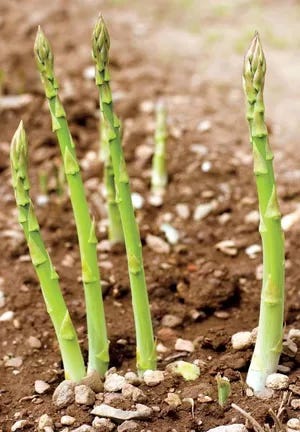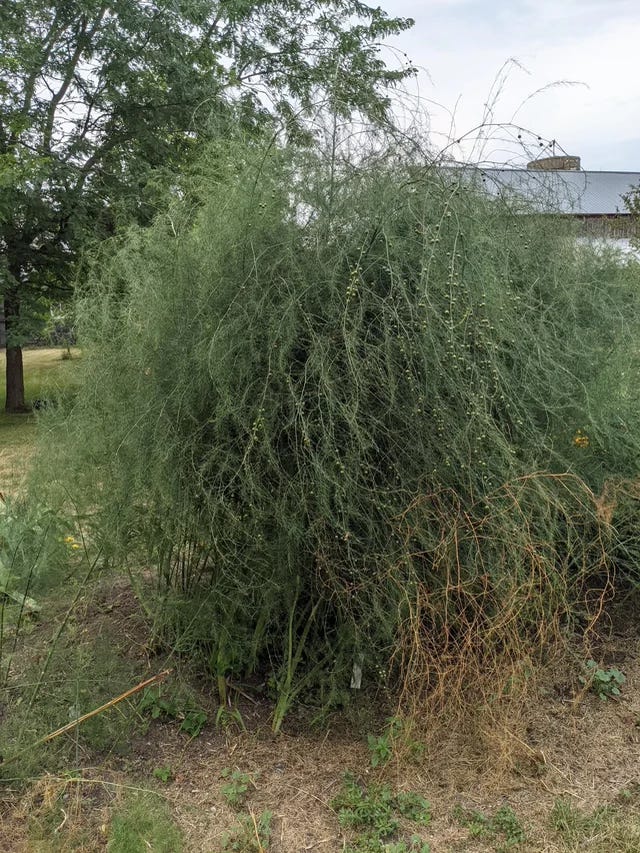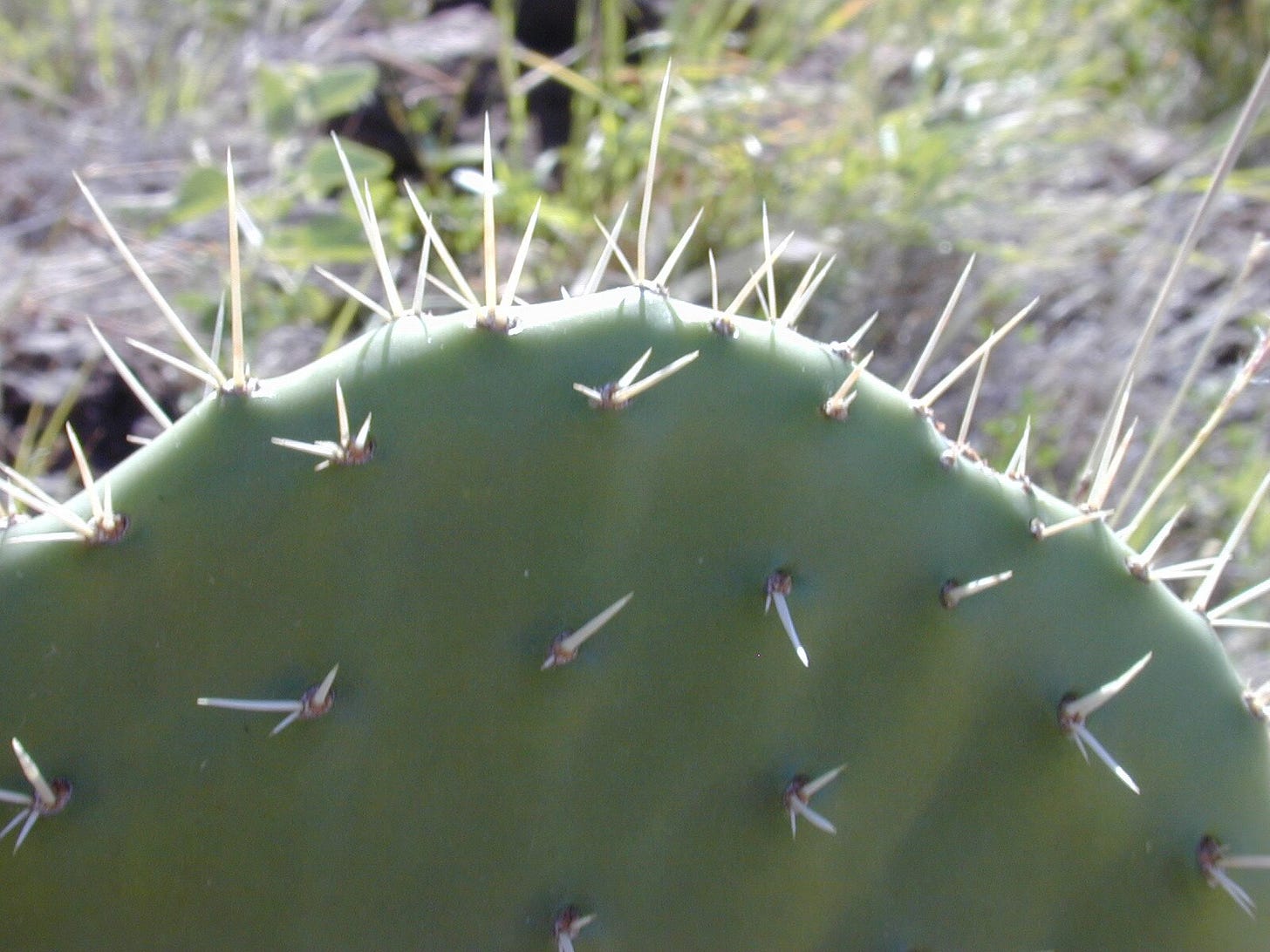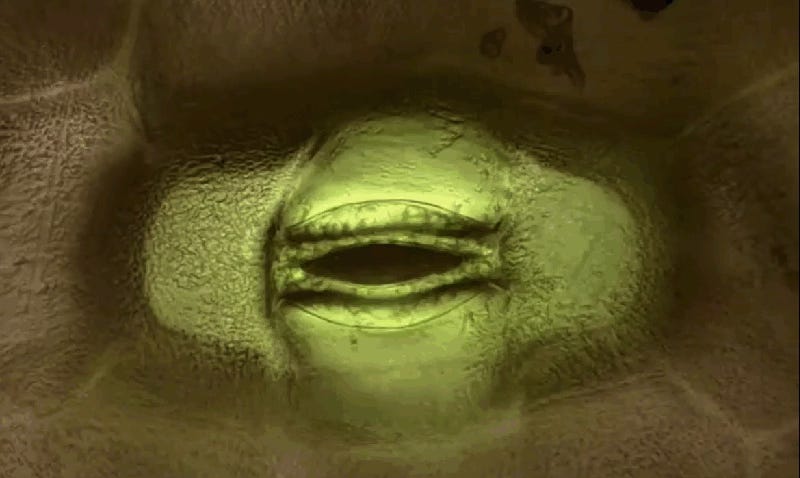More commonly known as asparagus fern or foxtail fern, Asparagus densiflorus is not a fern at all, but it is part of the asparagus family. Native to Southern Africa, A. densiflorus is a popular landscape plant in warmer parts of the world. There are many varieties but the two most popular are, ‘Meyersii’ and ‘Sprengeri’.
‘Meyersii’ is the one most typically called the foxtail fern. I personally think it looks more like a garden octopus, but maybe that’s just me?
‘Sprengeri’ is kind of the ‘hot mess’ version of the plant, but tends to be the one sold as a houseplant, while ‘Meyersii’ is planted outdoors.
Friends, I have to confess that I really couldn’t find a lot of information about this plant. Some sources listed it as edible, others said just its tubers were edible, others still said absolutely don’t put this in your mouth. So until I’ve met someone in person who has eaten it and is not dead, I won’t be adding it to my salads. I’m not one for culinary exploration. And while we do eat some members of the asparagus family, it’s a big family, so pretty diverse. Among the more well known members are the hyacinths which have toxins that work as cardiac stimulants. So, you know, just because it has a friendly name, doesn’t mean it’s not gonna try and kill you.
A. densiflorus does present an opportunity to look at plant morphology. Which is more fun than it sounds, or at least I’ll do my best to make it more fun than it sounds. When you picture a plant you probably picture a stem, leaves, and maybe flowers, right? But plants can be deceiving and something that looks like a flower can really be hundreds of tiny flowers all bunched together, or something that looks like a thorn is really branch, even something that looks like a petal can really be a leaf. Plants are masters of deception.
The interesting thing about A. densiflorus is that most of what looks like leaves are really stems and its leaves are barely noticeable thorns among the faux leaves. This is much easier to see in its bigger cousin, garden asparagus, so I’ll use that as an example. In the picture below, the triangular scales on the side of the stem are the plant’s true leaves.
If this asparagus were never harvested and the plant continued to grow you would get the glorious monster below skulking in your garden. All of those wispy things that look like leaves are not, they are called cladodes and are modified stems. Since these stems are green, they can still function as leaves and perform photosynthesis.
Prickly pear (and all other cacti) are also great examples of plants with cladodes. The big green pad pictured below is a modified stem (cladode), and the spines are actually the leaves.
There isn’t a lot of scientific research on the evolutionary advantages to a plant having cladodes over true leaves, but over at In Defense of Plants, they mention that cladodes may help a plant conserve water. The article mentions that cladodes might have fewer stomata and therefore lose less water. Stomata are the nostrils (??) of a plant. They are tiny openings that let oxygen out and CO2 in. Unfortunately, they also allow water to escape via evaporation when they’re open. So having fewer stomata on a cladode would definitely be useful for plants in arid environments.
Here’s a creepy GIF of a stomata opening and closing just for kicks and because I love throwing it in when ever I can.
So that’s about it. A. densiflorus might be edible and also might not, and has imposter leaves that might be advantageous for the arid climate where it’s native. A lot of mights, but I think we can all agree it is definitely worthy of a place in our homes and gardens. Mine is a ‘sprengeri’ and is new, but I’m pretty excited for it to be a big hot mess of an asparagus.
So that’s it! This month’s plant will serve as inspiration for the paid posts in my 100% Plant-Based Horror sections. Here’s the break down, in case you’re new and/or curious.
First week of the month - The Lab (that’s this post!) - Free for everyone
Second week of the month - The Witch Lab (a short, spooky piece from a plant witch’s journal detailing one of her experiences helping a client with the featured plant) - Paid subscribers only
Third week of the month - The Spell Book (an entry from The Witch’s spell book detailing how she uses this plant for her dark magic and experiments) - Paid subscribers only
Fourth week of the month - 100% Plant-Based Horror story featuring the month’s plant. These are longer stories that include everything from ghosts, to parasites, aliens, experimental supplements, and more! - Paid subscribers only









